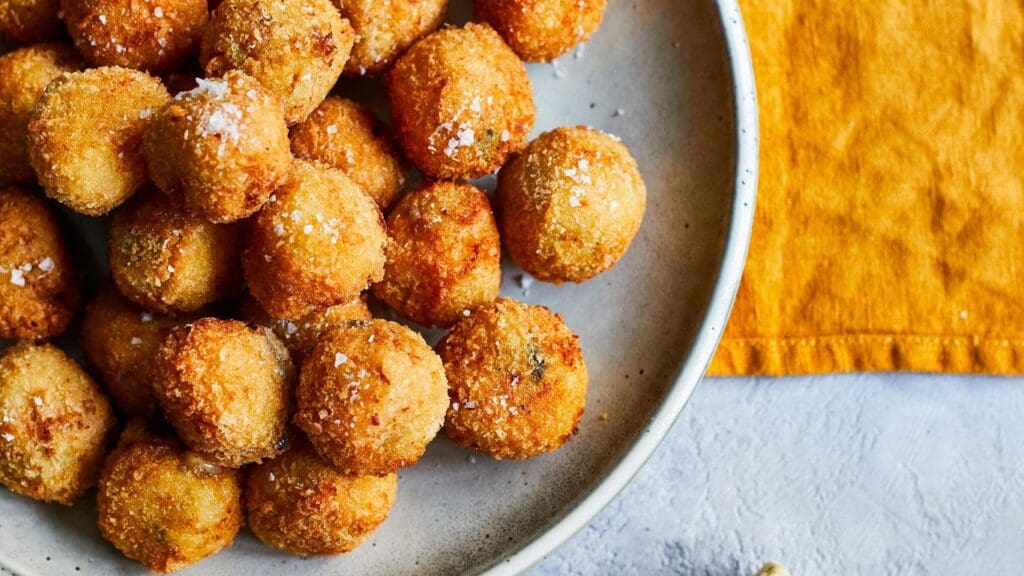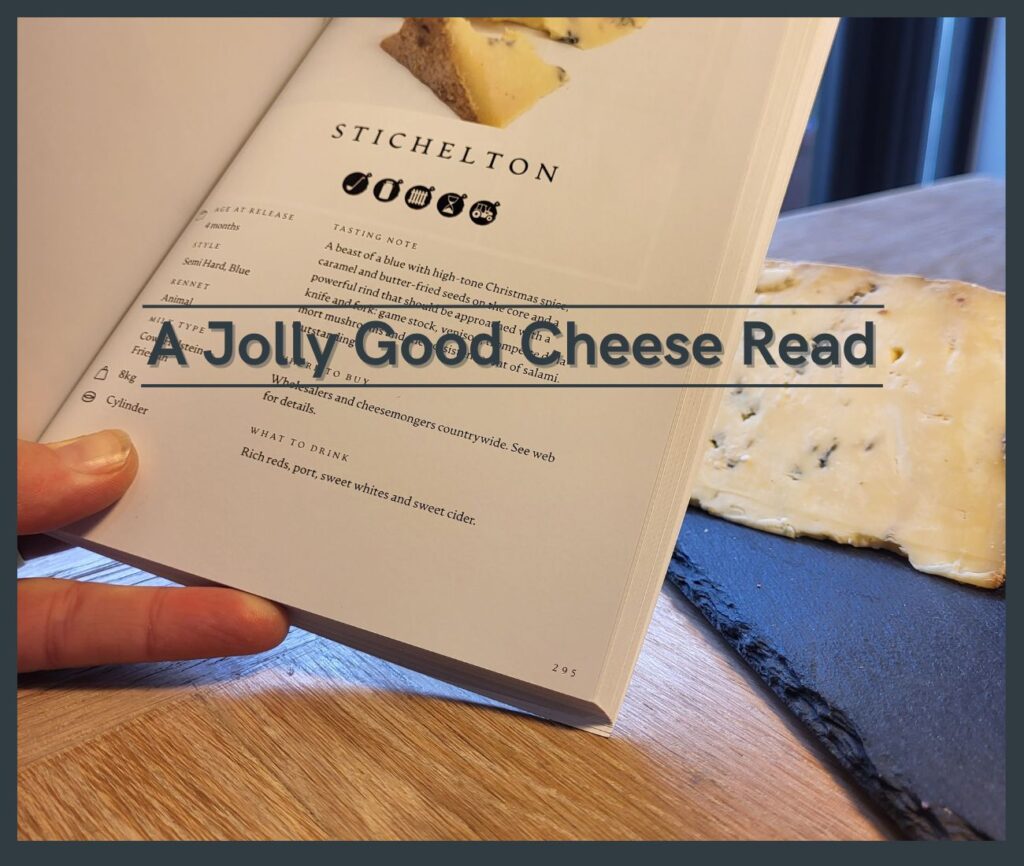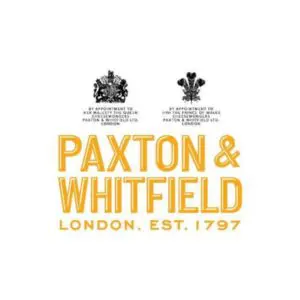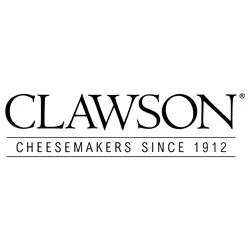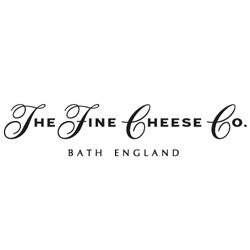#TNCN with Charlie Turnbull & John Farrand – discussing Classic British Crumblies, The World Cheese Awards and judging the Great Taste Awards in Lockdown
Live Broadcast On: 19th May 2020
British Crumbly Cheeses Episode Video Transcript
Whoa, tuesday night cheese night, welcome everybody i hope there are lots of you out there. I’m really looking forward to tonight we have discussion points today we’re talking crumbly cheeses.
Crumbly cheeses are some of britain’s very very oldest and they’re a style of cheese that’s pretty much unique to these islands which is quite interesting because one likes to think that the making of cheese is very broad and that we’ve been importing recipes and styles from the continent, and we haven’t developed much to ourselves.
But actually this whole spectrum of crumblies is uniquely us we’re going to talk about that tonight but the other cool thing that my guest tonight is John Farrand, who heads up the Guild of Fine Food, the um uh granddaddy of cheese and uk it’s probably over egging it a bit but they run the world cheese awards the biggest competition for cheese anywhere in the world anywhere in the world i’ll let him talk to you about that how let’s bring him on john welcome to the team are you there i’m certainly here charlie i’m ready with my um wonderfully stacked cheese board uh looking forward to talking cheese with you actually thank you very much thank you very much well that is that is the reason we’re here um you’ve actually got comfortably the most beautiful arrangement of cheeses that we have seen on tuesday night is cheese night i think you’ve done that wonderfully yeah my own work oh and i’ve got pictures behind you what you’ve got going on there uh we’ve got what have we got what do we got i’m i’m i’m in the office i’m allowed to be in the office we we are essential workers key workers uh that is san sebastian you can see behind me uh world cheese awards dinner uh up there i’m not sure if you can quite see that but that in 2016 we uh re-judged if you like brought together a lot of people brought together every uh world champion cheese we’ve ever had since 1988 and had a a very eminent panel of judges to look at those again which was quite fun uh to see what had won over those 30 odd years uh and that is uh that is uh krafka the norwegian winner uh in 2016. so yeah we’ve got a bit of a bit of a gallery of past world cheese so you like to surround yourself by cheese but even when you’re sitting at your office doing your excel spreadsheets that’s true doing the logistics which is what i do move things move food and people around the world so less romantic but uh a good thing but more of that later well i’m sure yeah no people out there watching if you’ve got any questions about the world cheese awards uh john tell us a little bit about them around the 8 25 8 30 mark um but let’s let’s let’s interrupt ourselves with good cheese so i believe we’ve got the same four cheeses in front of us at least that’s if the magic has worked out yep um so let’s introduce the stars of the show the cheese right today we have their cornish yard famous for its nettle covering produced by line of dairies uh in cornwall sort of south of truro that kind of direction um uh and this is this is an interesting one john isn’t it because it’s sort of both ancient and modern in some respects yeah it’s uh i love cornish yarg it is um one of those lovely stories where a recipe was found in an attic um and this reports to be a very ancient well it is a very ancient recipe um but was discovered i think in the mid to late eighties um and so actually sort of had a a rebirth if you like the cornish yard um and very normal for cheese makers over the centuries to wrap cover wash their cheeses and thing to help them be preserved really as we all know cheese ultimately is is preserving the goodness in milk um before we had fridges and freezers and all that sort of thing so they would have wrapped uh or washed things in and one of the most distinctive cheeses and one of the our most distinctive crumblies or territorials because it is wrapped in nettles and they really are nettles you often see some of these cheeses artificial or made up but they are picked and they have people called nettlers who go out picking their metals each year uh storing them up when they’re out of season uh and i’m freezing them so they can keep wrapping their cheeses all year round nettlers necklace that’s an interesting job i have never heard of then offer you that when you’re doing advice at 16. um i mean i i’ve heard a story that the reason that they use nettles is because cornwall wasn’t a very rich county back in those days and cloth was too expensive is that true could be could be yeah yeah it kind of could figure i mean i’d like to think that someone along the way decided that there’s some of the the flavor from the nettle and it does impart itself especially around the obviously around the edges where that whether where the uh you can see there’s a slight sort of color differentiation there that those those bits around the edges will always have that that slight vegetal note to it don’t think it was done for the flavor but you could also be right um it could be a way of of saving a wee bit of money and using what’s around you um i mean fundamentally these these cheeses the turrets the crumblies the territorials more than what you will they are meant to be indicative of of the region or the area that they are from they’re meant to absorb some of the flavor of the soil the environment uh what what’s growing around them um the french call it terroir um and hence that link with territorials but that that’s what we’re we’re hoping for in these cheeses charlie is to get a bit of flavor of their environment so you think we’re gonna taste a bit of cornwall tonight yeah yeah i think that’s a nice way of putting it um well uh we’ll quickly introduce the other cheeses and then we’ll get back and start tasting the corn now the one we’ve got in the middle is uh butler’s a butler’s lancashire but i understand this one is 18 months old i mean i love lancashire fantastic cheese but i’ve always thought it was younger than that what do you think yeah new to me as well um typically you’re right so six eight months um and normally a lancaster would be made over two or three days i don’t know if this one is mixture of curd um distinctive because as we know lancashire the weather changes an awful lot every day is different as it is everywhere really um and that will relate to the curd and the milk and give it a distinct flavor each day and some would say each milk morning and evening milk would give a different characteristic to a cheese and a good cheese maker will know how to use that milk from different days and different times of the day um to to make that often has a really good sort of 3d flavor to to it very can be very complex cheese lancashire is a strange one lancashire because they’ve got methods of making cheese out there that aren’t found anywhere else in the uk um we’ll get onto my taste but i mean this cheese looks to me like that cross between traditional styles with modern technology modern innovations to bring cheese into the 20th 21st century now um i mean there isn’t any question that our palettes have changed in the last 500 years what we eat alongside our cheeses has changed enormously last 500 years and the cheese is all cheeses have evolved and it’s going to be interesting taste that one where it’s it’s it’s it’s brought some innovation traditional recipe and the last one we’ve got we’re going to touch the blue at the moment last one we’ve got is um paul and sarah applebee’s classic cheshire i don’t know if you can see that very distinctive coloring one of the few colored cheeses in the uk um this one you can see is has been cloth wrapped you can see the distinctive cloth patterning sitting on the on the edge there with a little bit of mold and yeast buildup on the outside um and that is beginning you can just see the beginning of the breakdown just inside the rind where it gets a bit darker and a bit creamier um i this this is this is very old school john isn’t it yeah i think this is we talk about cheese making aristocracy and this probably probably is it uh applebee’s cheshire i mean cheshire what i like you saying that aristocracy in cheese this this cheese is allegedly uh was mentioned in the doomsday book it was fed to the romans i mean it has that sort of age uh to it in terms of how long it’s been made but yeah up in in in cheshire and shropshire made up there and applebee’s have been making it for a long long time and when we taste it we’ll hopefully be getting some of the saltiness that you will find typically and the sorts of plains up there in that part of the world so i’m quickly going to mention a few of the other crumb leaves which we’re not tasting tonight so classically we talk about crumblies including correctly if i’m wrong john where we’re talking the whenceydales the cafes um uh stilton is a crumbly um a single gloucester maybe that’s sort of borderline and and the classic characteristic of a crumbly is obviously a crumbly texture not that close density you would get off a cheddar and it’s achieved through the cheese making process of having a high acidity in the early stages which brief the technical moment washes out some of the bonds between the casein micelles okay stop the technical moment back to talking about cheese so let’s eat let’s eat let’s start with the philly i’m not the cappelli the uh the cornish art so do you eat the rinds do you think you’ll be wrong uh i think you do as you please uh that’s the right answer whatever you do you want to be eating you want to be eating it right up to the rind even if you don’t fancy the nettle but um have you gone through you probably must in previous episodes of this charlie you must have gone through how to warm up the cheese and smell the cheese and all those things you’ve probably done that already weeks ago as one of the leading judges on the planet john i think this is a perfect time for you to talk about you would advise your judges i was going to say i certainly wouldn’t i wouldn’t call myself one of the leading judges of the world but we organized well cheese was indeed but yeah i mean you’re you’re obviously looking to open up this cheese um we all know never to to taste cheese straight from the fridge in unless in certain exceptions with fresh cheeses but what you’re doing is is warming it up bringing out the flavors um opening up the cheese and um that way you’re going to find and get the most out of it and what are we getting here charlie well um i’m getting uh i think butter is the top of my dairy list i think i’m also getting kind of a little bit of a cottage cheese and i’m getting a little cream and because it’s cornwall i’m thinking i’m getting a little bit clotted cream but that could just be association yep no i’m definitely getting top of the milk absolutely right that’s sort of i’m getting top of that milk that sort of creaminess um i i don’t know whether it’s in my in my hair because we talked vegetable but there’s definitely some green vegetable grass in there from from that yeah and that is that is that is actually very very good [Music] um cheese like this um which is is bringing together a series of what you might call the gentler flavors or the milder flavors um can quickly be swapped the reason we’re tasting it first can quickly be swarmed by big flavors and the complexity on a gently well constructed shoes like this can be lost richard and i think you know take your time on a cheese like this it is really really worth it i think that’s a really good point and and i think perhaps some of us have lost we’re looking for big bold dare i say it’s sometimes a wee bit blunt flavors in in our cheese in our food generally actually and and you’re right it’s a lovely reminder that actually delicate and gentle can be excellent as long as that length of flavor is there that still keeps going nagging away there’s that tiny little bit of lemon or am i imagining it i don’t know a little bit i’m definitely lemonade yes i am i also think that in the in the flavor journey the first half is dominated by the dairy end of the spectrum and the second half gives more of those vegetable flavors very mild very leafy spinachy nectary those kind of things so not big cabbage that kind of stuff but the gentle nettle flavors thing um so if you eat the second piece too quickly you’re just going to be topping up your dairy flavors if that makes sense you need to settle it into the mouth and then get the full experience that’s going to be a sort of eight nine week old cheese i would think um can go a wee bit longer um even even at six weeks though it you can eat it and it’s obviously a wee bit fresher uh probably more lactic more more creamy um or milky at that point but yeah that’s a really really good cheese i um uh oh this is my it’s my favorite profile what they’ve got here um when you get the older yards which it ages relatively quickly this cheese because it’s got so much air inside and that kind of um uh it’s it’s a cheese that i think that i like the youngster the last hint of lemon and that’s the spring notes which i like very much so eight or nine weeks john let’s put do the math we’re in may so this is a march cheese you think in early march yeah yeah yeah i’d say so yeah yeah yeah right well let’s taste the nettle because we’re professionals and it’s our job to find these things out it doesn’t taste a huge amount it’s got a little bit it’s just like hints of bitter actually um but not particularly naturally and no stinging no stinging nettles for those people who are concerned that any you know males might be harmed in making the show good so we’ve got a good number one um let’s say and uh john you obviously know why it’s called yarg um do we want to share that with our assembled people oh i’m sure we do i mean it sounds wonderfully cornish doesn’t it as if it’s some old bornish word but you’ve spent the week on a bit of woad and go and make war with some welsh people or something but it’s not true isn’t it not true not true at all mr gray uh found the recipe in the loft for cornish yard uh grey backwards is of course yarg uh and i i believe was the was the original cheese maker in in the 80s yeah yeah yeah so there you go it’s like true bournemouth it’s made by mr robert it’s um uh it’s this grey backwards i like the word answer but you know itself it’s great it’s a fantastic it’s good it’s good to have that personality though i mean same with all these cheeses you’ll see names we’ll talk about the names of either the cheese maker or of the farm or where it’s from and again i think that’s important that’s all part of that terror thing is is the name of the maker or the name of the farm folks should be looking for that when they’re buying their cheeses yeah yeah now it’s worth saying that if you want to learn more about this stuff the academy of cheese is a fantastic training organization i have to keep popping this in there to make sure you all know that you need to be joining us on our academy cheese courses then you can do it through e-learning you can join my webinar course i believe the next one begins on the 3rd of june so sign in with me and we do just like this but we talk in cheese we have the cheeses to taste in front of us but john you uh your guild of fine food does training on the academy of cheese and you’re arms on seats kind of guy aren’t you yeah we’re a buns on seats kind of guy which is not much of that happening at the moment but yeah we like to get folk in a room um and we have about 12 to 15 people on a training day we’re current we have three courses uh though for those one aimed uh at those who sell cheese are more of a retail focus course and then we do the level one and level two academy of cheese courses um most of that takes place at our training room and facility right by borough market so a lovely excuse when we’re allowed to get out and do stuff uh come and see it in london se1 yeah now it’s it’s a i’m i’m a bit involved in that i do some of that stuff with you um it’s a great venue to to come and learn about cheese because obviously borough market is just a reservoir um right cheese number two let’s let’s dug in so we’re looking at this um innovation on classic lancashire it’s a traditional lancashire but they’re pushing it out to 18 months um and let’s see what they’re doing right so again you can absolutely see why it’s called crumbly i’m coming back at you mr camera i’m like i’ve bought myself a new camera it’s better although it’s just not seeing that probably sorry there we go that that’s getting it come on focus there we go so that slightly open texture where we’re not pressing the curd too much together leaving it what you might say space to breathe which is really nice lancashire traditionally made um over two or three days as i said earlier on to get different makes of milk get some complexity to the cheeses um i’d be looking for some yeah there is some butteriness there you want some butteriness some of the floral notes again from uh the flowers that they’ll be grazing on the wild herbs that sort of thing which you also see in there in wenzeldale uh where the cows there are on sort of sssis grazing on those wonderful wild herds but that lancashire has a has a has a different finish for me it’s it’s slightly um ma mighty there’s that sort of savory sweet yin and yang going on at the end there it is it’s it’s sweet and sour it’s really interesting um i mean soundness is a classic lancashire cheshire characteristic um the high acidity is true of all crumblies but you’re getting it they’ve combined it with i think that they are engendering more sweetness than you would get off a a really old school lancashire and that’s giving a really big complex recipe-like flavor isn’t it yeah yeah you’d i bet this would make good cheese on toast this one they grade out um so they’ll they’ll be when we say grade grading they’ll go in and be checking their batches of cheeses and someone who knows what they’re talking about will be looking at the cheese listening to the cheese tasting the cheese and they’ll know because they’ve got years of experience which ones are going to go the distance so they’ll they’ll be judging it up three you know a month three months six months just to see which one can go the difference and it’s true of a lot of cheeses that are mature for a long time you have graders checking them this has got uh this is 18 months old i think you said charlie and um they’ll have known that this one could go the distance and that’s why perhaps we’re getting that sort of interesting um sort of sweet and sour finish i agree you this is this is not a flavor profile that’s typical of the younger cheeses this is only we’re going to get if you hold it back let the flavors begin to bubble up and cauldron like inside the rabbit to to get interesting long-term flavors these long-term flavors it’s interesting i mean like they they even there are three grades of lancashire there is the what they call the crumbly the tasty and the creamy and the they seem very non-descript words but in fact there’s a very specific that the creamy is a naught or four months to 12 months the tasty that’s four to twelve weeks pardon me the tasty is 12 weeks plus and with a lot of these crumblies there is a tipping point an early tipping point at that three month mark where you go from quite a highly acidic and i often use the word feta style that’s really unfair on those jesus but it allows people to sort of envisage that slightly moist obvious curd big gaps acidity cheeses into when it begins to transition towards more savory notes the herbaceousness comes in and this is the same cheese just growing into its clothes as it gets older and those the two classic stars um the the crumbly style is is is another take again when we’re not using um that multi-day curd we’re going for an early punchy acidic flavor and it seems like the inglewood dairy the butlers have said look three’s not enough let’s find a new way to make lancashire have interesting flavors this is really good yeah another uh excellent um lancashire kirkham’s lancashire which we know again you’re looking for that that name that family name the kirkham’s been making language for a long time uh that’s cloth uh lancashire that one so um just just just ask your cheese shop when you’re buying some cheese and just ask them who’s made it where it’s from who’s the farmer producer really matters you want to get one that’s made in the lancashire area i mean we’re ingo white dairy we’re talking 20 miles from blackpool i mean like it’s properly up there it’s just under beaconfell and i don’t know if you know but the pdo for there is a pdr product designated origin for lancashire is the beacon fell lancashire chiefs and this dairy is i don’t know a mile from there or something so really at the center of lancashire land if that’s not what we’re told right you ready to go one more john yep sorry i’ve gone ahead i apologize um i know this cheese extremely well sarah and paul appleby um uh and um and i think it’s got so many characteristics which are uh unique in in real terms in real terms so do you want to have a comment i’ll get it up to the camera and uh you can talk about what you’re seeing yeah again i mean beautiful trees let’s have a look at the ryan at the clock um that i don’t know how you can see it that that’s often a work of art those things that when they said it’ll get a wee bit older um this cheese probably 12 12 weeks old i’m already getting up front a saltiness which we talked about a wee bit earlier that you would get the sort of characteristic from the area from cheshire but it’s not an unpleasant saltiness it certainly isn’t a whack you in the face sea salt kind of i’ve swallowed i’ve fallen into into the sea and swallowed a load of water it’s a lovely gentle saltiness uh that just keeps going and then you’re picking up a little bit of a little bit of citrus again some buttery notes but as with the yarg it just keeps going along uh the flavor profile is long but it is delicate there aren’t any horrible punch in the face flavors there that’s a real real gentle beauty that i i think this is a this is a cheese step i the older i get there i say it the more i love this cheese this wasn’t a cheese i hope that doesn’t offend anybody um but i find that they’re for all against all cheeses this the the classic applebee’s cheshire has relatively few dairy notes so and i think that what it delivers is almost like a hoppy bitterness that sits in a vegetable bitterness um i’m fascinated by business because i think that it’s one of those flavors that just can tip you either way so quickly badly used it just awful correctly used it reaches into a lot of other interesting complex flavors and that gives it a gives a platform for hoppiness for chocolate for a lot of lots of other things and gives it sort of a bit of welly to some of those flavors which i really like um and i and and you know it’s worth mentioning there’s a saltiness you’re talking about john there it is in theory coming from the cheshire flats which had these big salt rock bodies underneath the grass and there were various chassis made in the old days and what along the it the weaver river i can’t i think it’s the weaver where they would get different cheeses during the summertime because these would be meadows that would be unpasteurizable uh unposted you can’t feed cows there whatever but during the winter because they’re too wet so they come in lots of milk being made and they would push these cheeses so they’re looking to make cheeses during those summer months that will take them through the winter so very territorial like you’re talking about john very specific in that sense the salt the meadows all that kind of stuff we’re not even talking about the romans i mean no i don’t know don’t talk about the romans and and then again with these queues reflect their their ground and their terroir if you like it’s so much more satisfying to drink something with them that’s similarly from that area hence you you’ll put a cider with a decent cheddar um and and that sort of thing i’m amazed actually how many um i’m i’m actually having a cider a small cider how many ciders around the world not just here in the uk but wherever we seem to hang for the world cheese awards where there’s a culture of good cheese making there is often also a culture of of great cider making as well and the two go hand in hand sort of made together and and similarly tasted together absolutely beautiful well nice segue on to the uh the world cheese awards john i couldn’t could have primed you for that so um we’re taking um uh we’re taking a question of the world cheese what do you wanna just give us the the 101 i mean like is it really the whole world or is it just like british people pretending it’s the whole world no no no it’s it would be um silly of me to say it was the whole world but um certainly we have more more entries from more countries um than most um last year we had entries from 45 different countries um but it’s not just about the cheese although we’ve got some i think we’ve got 14 consolidation points around the world so the cheeses get sort of put together as far away as australia south africa america south america um and then obviously most of europe they get sort of brought in together to one point wherever we are that year uh and for the last 10 years we seem to have dotted around major cheese making cities of europe um but it’s not just about the cheese as interesting as that is and we get some extraordinary cheeses from these small cheese makers but it’s about the people as well our judges of which we have about 200 250 and again they’re from around the world so last year we had uh judges coming in from japan uh from russia uh from the usa from from barbados some really obscure um in terms of cheese making terms and obscure places and that for me is what makes it so colorful uh because the cheese world comes together yes to celebrate artisan cheese makers because we take our job very seriously about judging the cheese and giving out gold silver and bronzes but also just to sort of get people in the same room for 48 hours and talk cheese and a little bit of business gets done and a lot of fun it sorry quite a lot of business gets done i mean you have uh i can’t remember the exact number it’s around 300 judges doing yeah yeah we’ve got last year we had 3 700 entries um so yeah pretty big and that’s all cheese um we don’t we don’t really have time or room uh to do butter and yogurt and other things so we are just focused on the cheese um and yeah we we have a wonderful celebration but it is important that the cheese makers from across the world get a light shine on them and that is why in 1988 it was started to try and protect uh and and to highlight uh artisan cheese makers who then were having a tricky time and of course now are having a tricky time yeah they are but i mean if i remember rightly you can’t get cheeses from some countries there are sort of environmental health blocks and that kind of thing yeah yeah we had a we we have issues most years with certain countries um last year we had some problems getting our south african cheeses into italy um yeah it’s it’s it goes with the territory charlie uh that’s what we have to do uh moving cheeses uh especially raw milk cheeses from all corners of the globe is not easy but um when we get it right we get them in um people can experience some amazing things we’ve had cheeses from australia um but in ants of art from from south africa where we’ve got um beautiful drawings uh on on the rind of the cheeses i mean it trips over into art on occasion well we were talking to jamie montgomery a couple of weeks ago and the question was does he think himself more of a scientist or an artist and he would definitely say the art of the game it’s the art of the game it’s the managing of the of the the unknown the chaos and and that kind of instinctive please make a skill that makes it happen i mean yeah i remember that one with the with with the ants on top um and you’re going is this is this just someone just trying it on you know it’s they just want attention and then he tasted it and it was lemon them for being they were green ants from australia um and they were awesome it was an amazing cheese i think you got a gold didn’t it i mean it was a gig just like the yard they are using what’s around them what’s in their environment what can we wrap the cheese in to help preserve it and and by accident probably in in the first place give it some flavor and they hey presto you’re gathering up ants in australia somewhere um but yeah of course you are that’s exactly what you do so have you got a favorite moment from the world cheese awards that you would uh like to tell people about what’s what i don’t think necessarily here i’ve got a favorite moment every year just the coming together of the people and the cheeses is extraordinary and it’s how people take it incredibly seriously we we our judges work very hard at the appearance the cheese the body then they’re looking at the body and the texture of the cheese and then the aroma uh and and then obviously flavor and mouthfeel and and does it does it taste great is it excellent um and they do work hard at it but yeah it’s it becomes a fun occasion as well too and so it should do uh and and and this is gonna ask the question which i actually do know the answer to but it needs to be asked um why is it subjective why isn’t it just i like that cheese why why do you need judges i mean surely cheese is there for fun why well yeah there is an element of fun but i think we all we all have to accept that some people know more about some things than others um i i know less about opera or or classical music and and there are book prizes there are prizes for dogs there are prizes for everything uh and and our panel of judges who who come from around the world are cheese buyers they’re right about cheese they’re cheese makers themselves they understand cheese so we have to accept that their opinion uh and their palettes uh their trained palettes probably can recognize better cheeses than go public if you like that that said ultimately things have to to taste wonderful too uh and and as you rightly put it there is an incredible balance between the science and the technical side of cheese and the romance and the art side of it and though you get you get quite a divide within the the cheese world between the two in some ways but actually if we’re honest when the two come together and are executed brilliantly that’s when you get an award-winning cheese and i think that it’s easiest to show is when you see people coalesce around an agreement and they go oh my god this is amazing i mean the recent winner which was david grambles is um rogue blue there was a proper sit back moment and go this is amazing cheese this is on its day and the other thing that we have to recognize the world cheese awards is that it’s got to be right right now it it can’t be right tomorrow it can’t be right yesterday it’s got be right now and they might have come all the way from australia or south africa or you know somerset you know we might be doing the awards in bergen in norway and it’s gonna get how did you get the perfect soft cheese too so there’s a huge amount of judgment that goes on and i find that um beauty breaks through do do do you know what i mean like when you’re when you’re watching the cheese tables you can see bubbles of excitement as people go are you and they you know i walk tables in my role as sort of commentatory person and people go charlie charlie gotta taste this and it’s amazing when these are amazing cheeses yeah yeah no you’re absolutely right and it does it it it causes you for it i mean we’re actually quite lucky here because uh cornish yarg grabbed the gold last year 2019 as did the applebee’s cheshire uh not not this particular cheese but butlers have done rather well as well uh last year they got a goal for their trotter hill and a goal for their kinderton ash as well so i mean there’s some there’s some award-winning cheese on our cheese boards right now which is good to see okay i’ve got a few questions um when is the best season to pick nettles um no idea um anna i’m just guessing it’s probably about now um certainly in my garden nettles are big but what they need is the big leaves they’re little leaves you can imagine a creek they then i do like that cheese um they then uh they then scorch them uh you know scored ones and freeze them so i’ve never got jill die what’s what’s the trick of eating a crumbly it makes quite a mess do on your own in bed right answer and alison tuck are they good members of the public to are they are they good for members of the public to visit um uh alison where are you wanting to visit two probably the world please awards okay tell them about that john yeah yeah we can every year it’s it’s co-located with a a festival a cheese festival or in fact a wider food festival so uh last year in italy we we we had sort of food from that uh region of uh of italy and a festival to celebrate it and the public are allowed in um so it’s a bit of a bit of a travel bit of a journey but yes you’re all very welcome just on the point of the the the nettles i wonder if there is another cheese that liner make which uh uses wild garlic leaves i always think the younger leaves often give the most flavor certainly when you make a pesto with with garlic leaves they’re better when they’re younger so i don’t know if it’s true of nettles i don’t know enough about that but i would assume the younger nettles might give a better flavor but i don’t know good one to find out um i’ve got a lovely response on the how do we eat crumbly cheeses from charlotte uh put it on an eccles cake i think that is clearly the answer okay so eccles cake and cheese and language lecture all round um i’m going to say thank you very much john for coming on telling us about the world cheese awards uh it is a pleasure to to go to them it’s one of the greatest events of the year and i’d like to thank the makers of these cheeses so we’ve got the applebee’s the butlers and uh the line of dairy catherine mead thank you very much for your cheeses tonight um thank you everyone for watching and i hope to see you next week next week we’ve got our first of what hope you’re really thinking of the tour de france so we’re going to look at the massive central and talk about the cheeses of central france um and uh and that kind of thing so on that note thank you very much we will see you next week when we will talk to you again keep on the curd thank you oh bye-bye bye-bye and broadcast marvelous.

